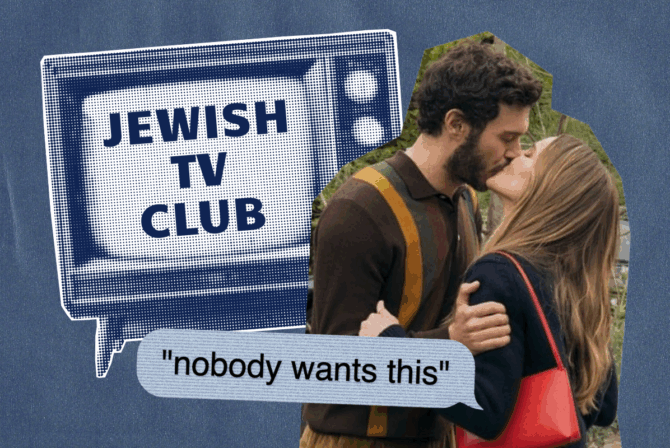
Writing a good Jewish children’s book (or any children’s book, for that matter) is not an easy task. It can be a slippery slope from a story with a lesson to a heavy handed, moralistic tale. The best advice on the topic I’ve heard was from Laurel Snyder, author of Baxter the Pig Who Wanted to Be Kosher. “In general,” she cautioned, “if you know what your message is before you know what your story or character is, your message will drown out the story.”
 It’s this commitment to good storytelling above all else that makes some books dog-eared favorites, while others sit on the shelf, untouched. It’s far more appealing to learn about Shabbat from a confused but charming pig than a preachy, omniscient narrator, just as it’s far more pleasurable to learn about friendship from Leonardo, the Terrible Monster, by Mo Willems, than a book called You Should Be Nice To Your Friends (as of yet unwritten. I hope.)
It’s this commitment to good storytelling above all else that makes some books dog-eared favorites, while others sit on the shelf, untouched. It’s far more appealing to learn about Shabbat from a confused but charming pig than a preachy, omniscient narrator, just as it’s far more pleasurable to learn about friendship from Leonardo, the Terrible Monster, by Mo Willems, than a book called You Should Be Nice To Your Friends (as of yet unwritten. I hope.)
When I began to write children’s books, I didn’t follow Laurel’s advice. (In my defense, I hadn’t heard it yet.) I started with a message, not a story. I was a first grade teacher at a Jewish day school, and my curriculum included teaching about hanging a mezuzah. I thought that reading a picture book on the topic would be a great way to begin the unit. Unfortunately, none existed. Undaunted (well, maybe slightly daunted…) I decided to try to write my own. Ultimately, this led to the publication of A Mezuzah on the Door, a selection of The PJ Library since 2007.
Before starting to write, I actually thought a lot about my message. What did I want children to learn from the book? Not only did I want to impart information about what a mezuzah is, but I wanted to open children to the possibility that it might be exciting and meaningful to have their very own ritual object–one that was just theirs, in their very own room.
I wrote about a little boy who moves from a noisy apartment to a quiet house, and how hanging a mezuzah in his bedroom as part of a party with his former neighbors helps ease this difficult transition. It took me a long time to come up with a narrative thread that truly felt like a story, not a thinly veiled lesson. Nevertheless, at times, the book veers off into too-much-information land (no, not that kind of TMI) and one reviewer correctly identified some of the dialogue as “stiffly didactic”. That’s because deep down, I’m not a Laurel Snyder or Mo Willems. I’m not a writer who happens to teach. I’m a teacher who happens to write.
Despite my literary sins, an amazing thing happened. According to The PJ Library parent survey results, after reading A Mezuzah on the Door, a number of families hung mezuzot on their children’s doors for the first time–because the children asked for them. As one mother wrote, “we are going to be placing a mezuzah at ‘child level’ on the bedroom door. There’s already one at ‘grown up’ level, but my girls wanted one they could touch on the way into the room. Thanks.”
As a teacher and mother, I know that for children, most of Judaism is “top down”–a parent or teacher creates an experience and invites, or requires, the child to participate. Writing a book for children might have been the first time I inspired children to take the lead in their family’s Jewish life.
Of course, I agree with Laurel Snyder. A book that’s all about a message is likely to be a lousy book. But that shouldn’t stop authors from trying to offer lessons about Jewish values and tradition in their work, and it certainly shouldn’t scare parents off from buying such books. Because despite the possible pitfalls, there may be no more effective and joyful medium for teaching children about Judaism than a well-crafted story. Especially when it’s read aloud while snuggling on a loved one’s lap.

This piece is part of our monthly series with The PJ Library. The PJ Library program sends Jewish-content books and music on a monthly basis to families with children through age eight. Created by The Harold Grinspoon Foundation in partnership with local Jewish organizations and philanthropists, The PJ Library is available in more than 130 communities across North America







